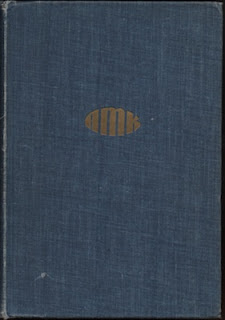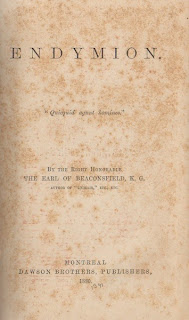One hundred years ago today, the Toronto Globe published a short article about a YMCA book contest. The Association had asked participants to provide a list of "the twelve books in English, which together give the best picture of life and development in Canada." Just how many participated is a mystery. What we do know that these lists of twelve included a total of 108 books by 85 different authors.
The three most common titles were:
The Golden Dog - William Kirby
Maria Chapdelaine - Louis Hémon [trans W.H. Blake]
Sunshine Sketches of a Little Town - Stephen Leacock
All three are in print, though I dare say only the Leacock would be recognized by any measurable percentage of YMCA members today.
Seven titles are tied for the fourth position, which suggests limited participation. What follows are the fourth place titles and authors aspresented in the Globe article:
Sam Slick - Judge Haliburton
Lords of the North - Agnes Laut
Roughing It in the Bush - Susanne Moodie
Anne of Green Gables - L.M. Montgomery
Seats of the Mighty - Sir Gilbert Parker
Chez Nous - Revard
Three observations:
- Judge Haliburton (Thomas Chandler Haliburton) never published a book titled Sam Slick;
- "Susanne Moodie" is actually Susanna Moodie;
- the surname of the man who write Chez Nous is Rivard not "Revard." I have no idea why his first name is absent.
 |
| Chez Nous Adjutor Rivard [trans W.H. Blake] Toronto: McClellend & Stewart, 1924 |
Judges Dr George H. Locke and Vernon Mackenzie awarded first place to May Knowlton of Montreal for her list of twelve:
The Foreigner - Ralph ConnorThe Habitant - Dr DrummondFlint and Feather - Pauline JohnsonThe Golden Dog - William KirbySunshine Sketches of a Little Town - Stephen LeacockRomance of Western Canada - R.G. MacbethMontcalm and Wolfe - Francis ParkmanPioneer of France in the New World - Francis ParkmanTrail of '98 - Robert W. ServiceThe Prairie Wife - Arthur StringerThe Life of Sir William Van Horne - Walter Vaughan
No prize is mentioned.
I wonder what the judges would've thought of mine:
There's a good chance that Sunshine Sketches of a Little Town, Anne of Green Gables and Sara Jeanette Duncan's The Imperialist would bump off three, but it's been forty years since I've read any of them.
You don't want to trust that kid's opinions.
Related posts:
Canada's 100 Best Books? 102? 111?







































